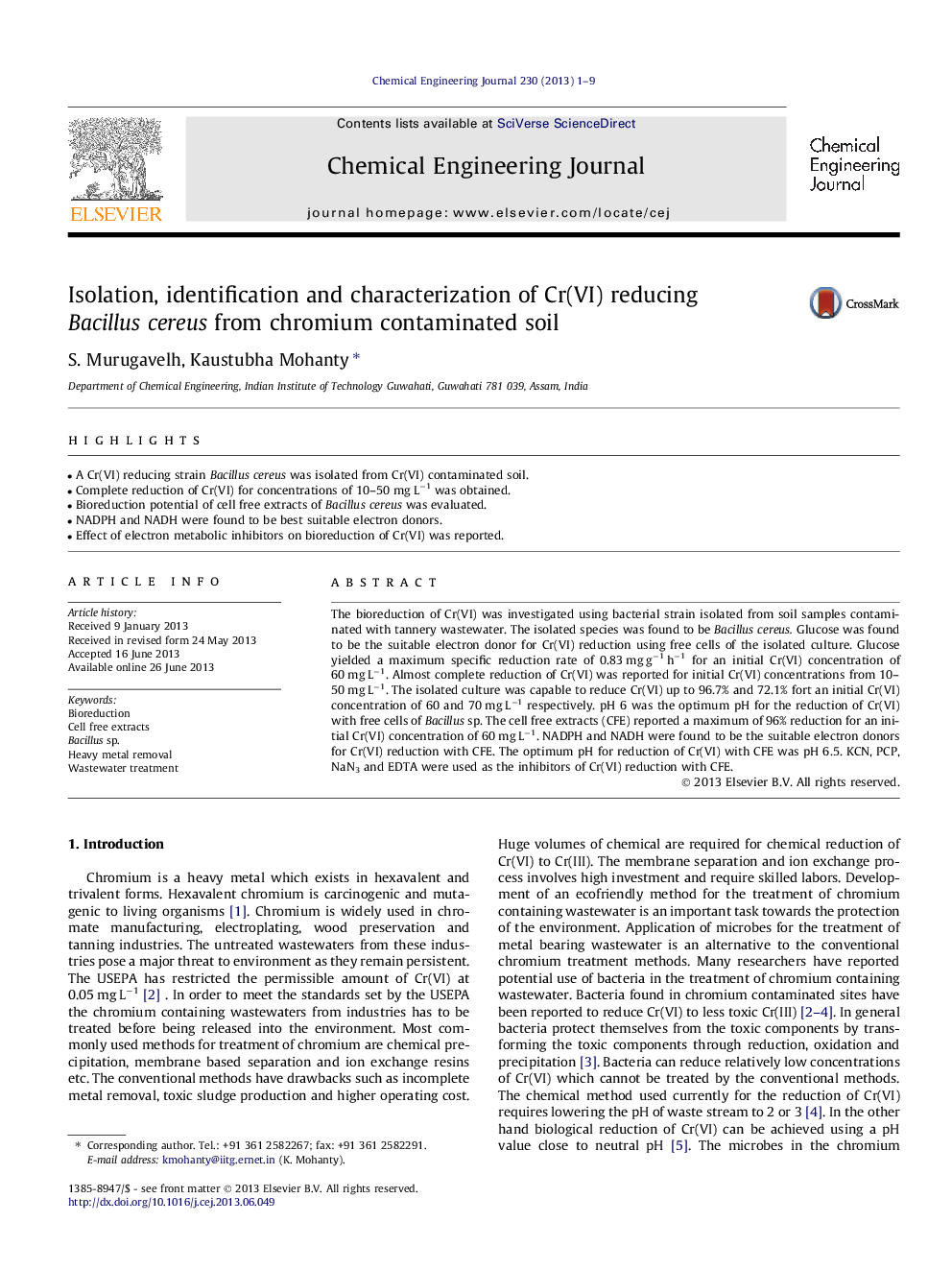| کد مقاله | کد نشریه | سال انتشار | مقاله انگلیسی | نسخه تمام متن |
|---|---|---|---|---|
| 148360 | 456411 | 2013 | 9 صفحه PDF | دانلود رایگان |

• A Cr(VI) reducing strain Bacillus cereus was isolated from Cr(VI) contaminated soil.
• Complete reduction of Cr(VI) for concentrations of 10–50 mg L−1 was obtained.
• Bioreduction potential of cell free extracts of Bacillus cereus was evaluated.
• NADPH and NADH were found to be best suitable electron donors.
• Effect of electron metabolic inhibitors on bioreduction of Cr(VI) was reported.
The bioreduction of Cr(VI) was investigated using bacterial strain isolated from soil samples contaminated with tannery wastewater. The isolated species was found to be Bacillus cereus. Glucose was found to be the suitable electron donor for Cr(VI) reduction using free cells of the isolated culture. Glucose yielded a maximum specific reduction rate of 0.83 mg g−1 h−1 for an initial Cr(VI) concentration of 60 mg L−1. Almost complete reduction of Cr(VI) was reported for initial Cr(VI) concentrations from 10–50 mg L−1. The isolated culture was capable to reduce Cr(VI) up to 96.7% and 72.1% fort an initial Cr(VI) concentration of 60 and 70 mg L−1 respectively. pH 6 was the optimum pH for the reduction of Cr(VI) with free cells of Bacillus sp. The cell free extracts (CFE) reported a maximum of 96% reduction for an initial Cr(VI) concentration of 60 mg L−1. NADPH and NADH were found to be the suitable electron donors for Cr(VI) reduction with CFE. The optimum pH for reduction of Cr(VI) with CFE was pH 6.5. KCN, PCP, NaN3 and EDTA were used as the inhibitors of Cr(VI) reduction with CFE.
Journal: Chemical Engineering Journal - Volume 230, 15 August 2013, Pages 1–9